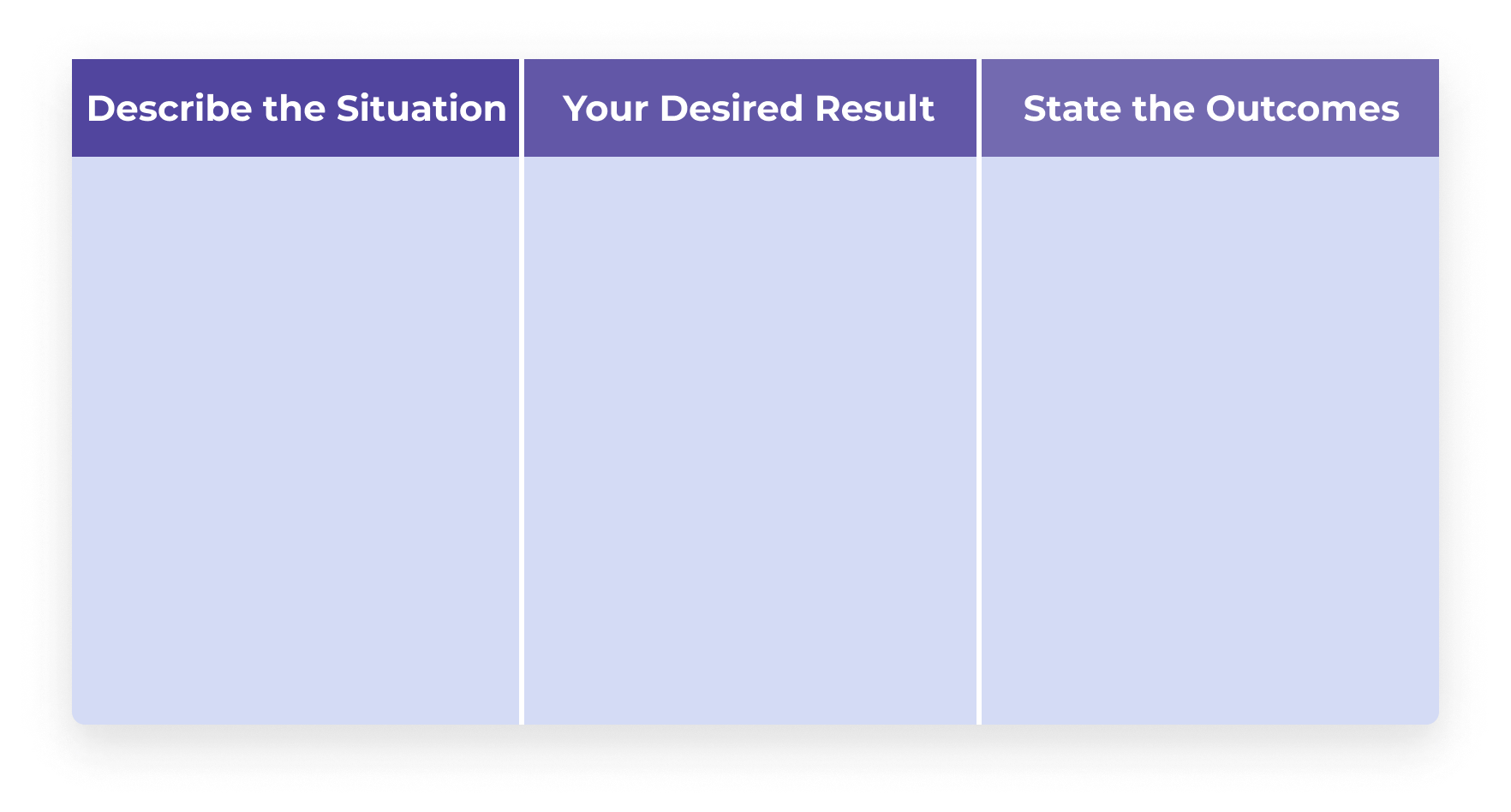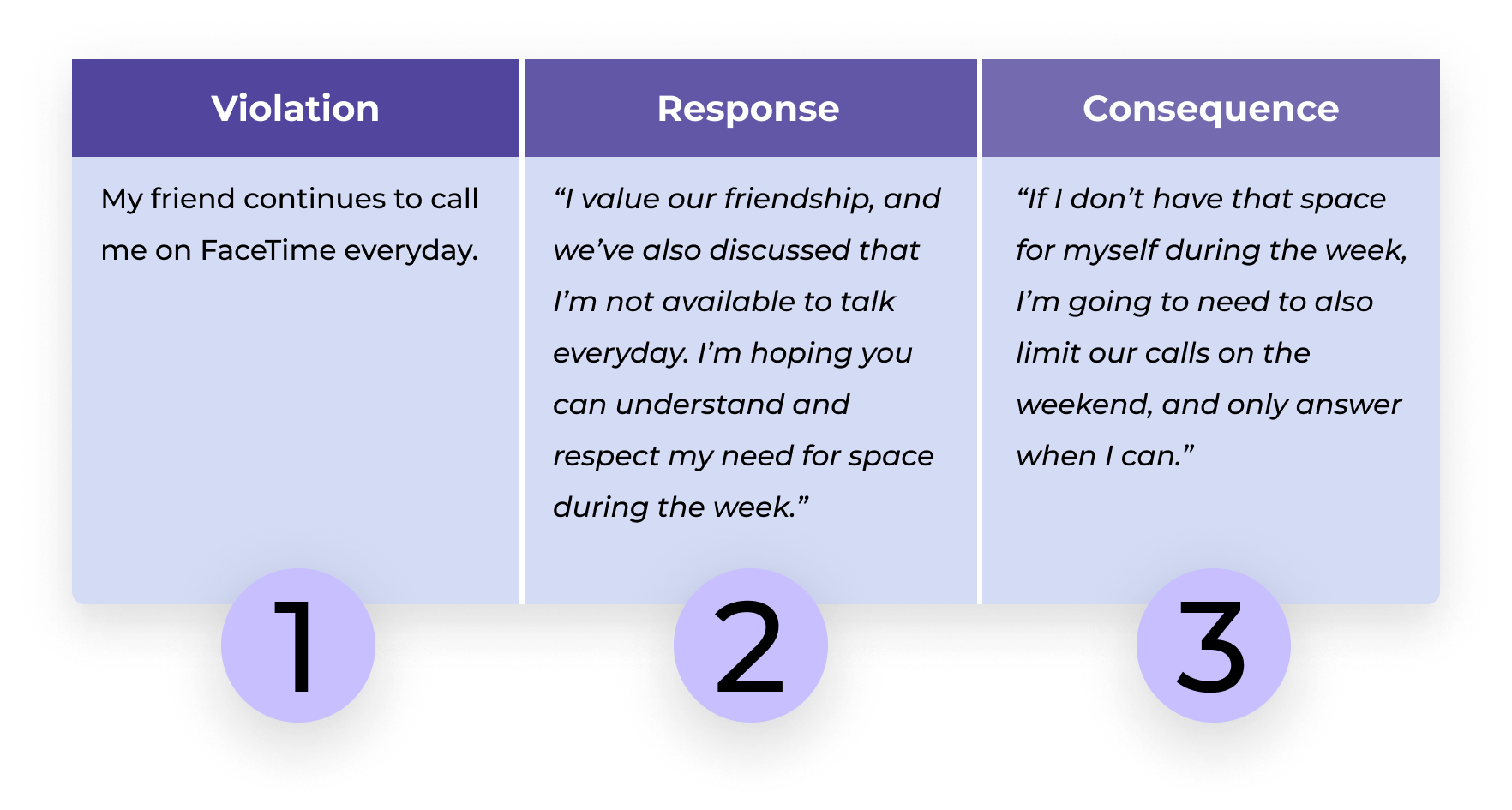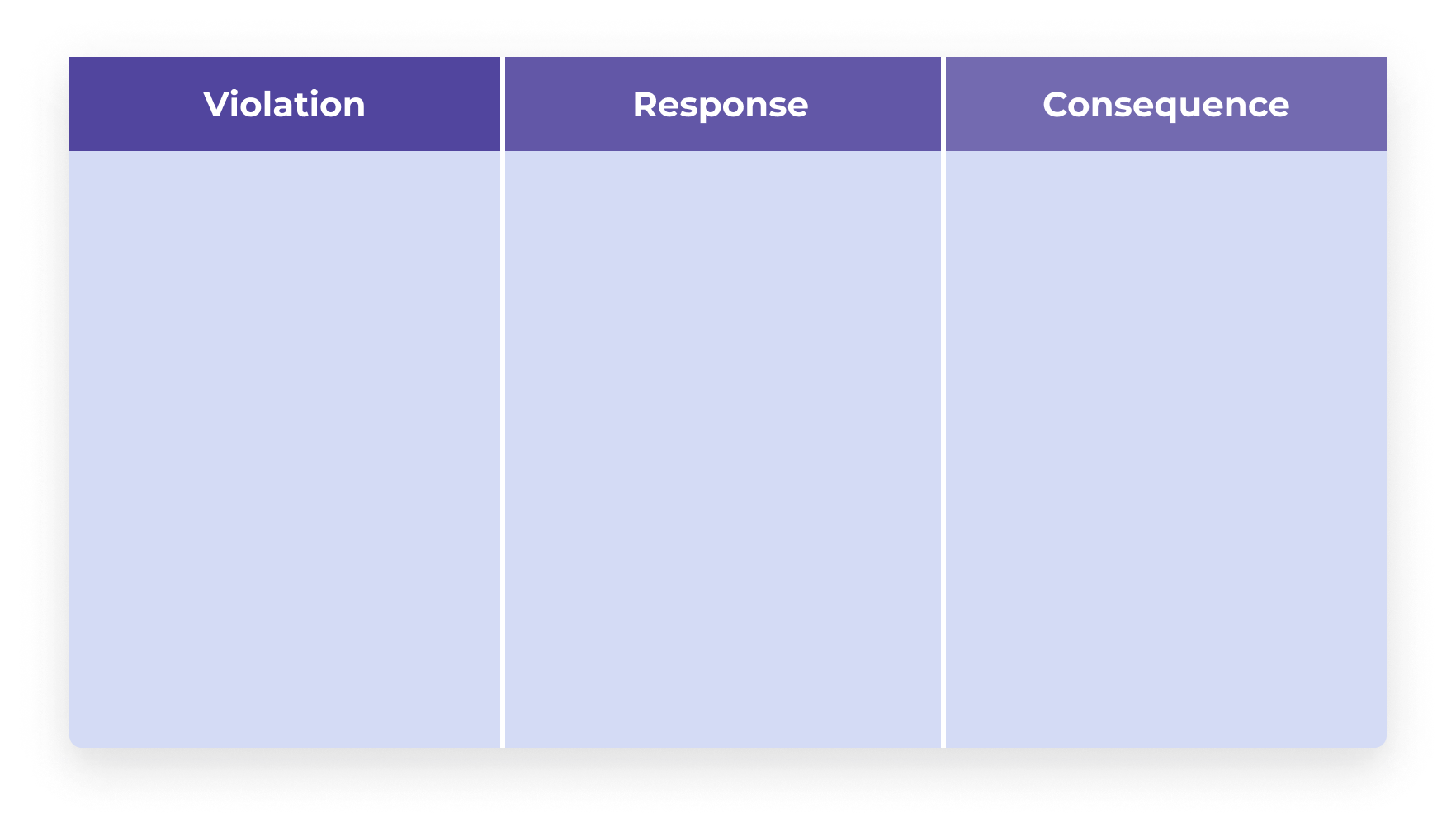Communicating Boundaries

You can personalize the Communicating Boundaries resource by downloading it HERE, and adding your own responses, or continue to view it below.
Boundaries are rules that we set for ourselves based on our needs, values, beliefs, and past experiences. Boundaries are guidelines that are created to provide a sense of direction on how others can treat us. Being able to identify and communicate our boundaries allows us to have more control in our lives. And if we don't identify and set clear boundaries, there’s an opportunity for others to take advantage of us in our social, professional, romantic, and family relationships. This may be uncomfortable at first, but boundaries can be seen as a healthy line of protection for our mental health.
How to Communicate a Boundary
To fully establish our boundaries, we must be able to effectively communicate them to those around us. It is unrealistic to expect people to respect our boundaries if they don’t know about them. Before communicating a boundary, it helps to plan exactly what we’re going to say; almost like writing a script. By practicing what we’re going to say in advance, we’ll be more comfortable and feel less anxious expressing what is needed in the moment.
Step 1: Objectively describe the situation and the feelings that result, using “I” statements.
- For example, “I feel hurt when you're spending a lot of time on your phone, while we're out on a date.” See the Emotion Wheel for reference.
Step 2: Express your desired result.
- For example, “I enjoy spending quality time together, so I'm hoping you can spend less time on you're phone when we're out.”
Step 3: State the outcomes.
- For example, “It'll help me to feel more appreciated and cared for, which will also help me to be more connected and intimate with you.”
Crafting a Boundary Statement
Now it is your turn to practice! Take a look at the example, then use the table below to craft your own boundary statements, in your own words.


Enforcing Boundaries
In many situations, merely communicating our boundaries is not sufficient. Some people may need time to adjust to our new boundaries, and may not fully respect them at first. So, it is best to assume that certain people will overstep the boundaries we’ve set–whether that be intentionally or not–and be prepared to handle any “boundary violations”.
Step 1: Identify potential violations.
- Reflect on: what are some ways that someone might overstep a boundary you’ve established?
Step 2: Prepare responses for these violations.
- Reflect on: how will you firmly remind them of the importance of your boundary? How will you handle minor violations as opposed to major?
Step 3: Create consequences.
- Reflect on: what will happen if the person continues to violate your boundaries?
Now it is your turn to practice! Take a look at the example, then use the table below to create a response to any boundary that someone crossed in your own life.



Additional Resources
Call 911 if you’re having a
mental health emergency
Text Home to 741-741 if you're in emotional
distress and need immediate support
Call or text 988 Suicide &
Crisis Lifeline. Chat service
is available at 988lifeline.org.